Karakalpakstan
Karakalpakstan
The Republic of Karakalpakstan is an autonomous republic within Uzbekistan that occupies almost a third of the territory of Uzbekistan, in the west and northernmost part of the country, with Nukus as the capital. The area is bordered by Kazakshtan in the west and north and Turkmenistan in the south. Urgench area is already outside Karakalpakstan. Most of our Uzbekistan tours venturing to the western part of Uzbekistan, also include Karakalpakstan.
This autonomous republic has its own Karakalpak language and the state is comprised primarily of ethnic Karakalpaks, Uzbeks, and Kazakhs. Linguistically and culturally, the Karakalpaks are closer to Kazakhs than Uzbeks as the Karakalpak language belongs to the Kipchak branch of the Turkic family together with Kazakh language, while Uzbek is in the Karluk branch.


It is noteworthy to mention that the Karakalpak area was once an autonomous region within Soviet Kazakhstan during the New Economic Policy era of the 1920s before its administration was transferred to the Russian Soviet Federative Socialist Republic in 1930 and finally to Soviet Uzbekistan in 1936. The name “Karakalpak” translates as “black hat,” from Turkic languages but its origin is not known. There is also a minority of estimated 300 000 Karakalpaks in Kazakhstan, which is considerably less than the about 1 million in Uzbekistan, making Karakalpakstan the justified home of Karakalpaks.
Karakalpak People
There are theories of Karakalpaks being related to the Chorni Klobuky (black hat) soldiers of the Kievan Rus’ from the 11th and 12th centuries, though apart from the common meaning of their names, there is no evidence linking these two groups. According to the constitution, Karakalpakstan is formally a sovereign state. The state is regulated by treaties and agreements with Uzbekistan.
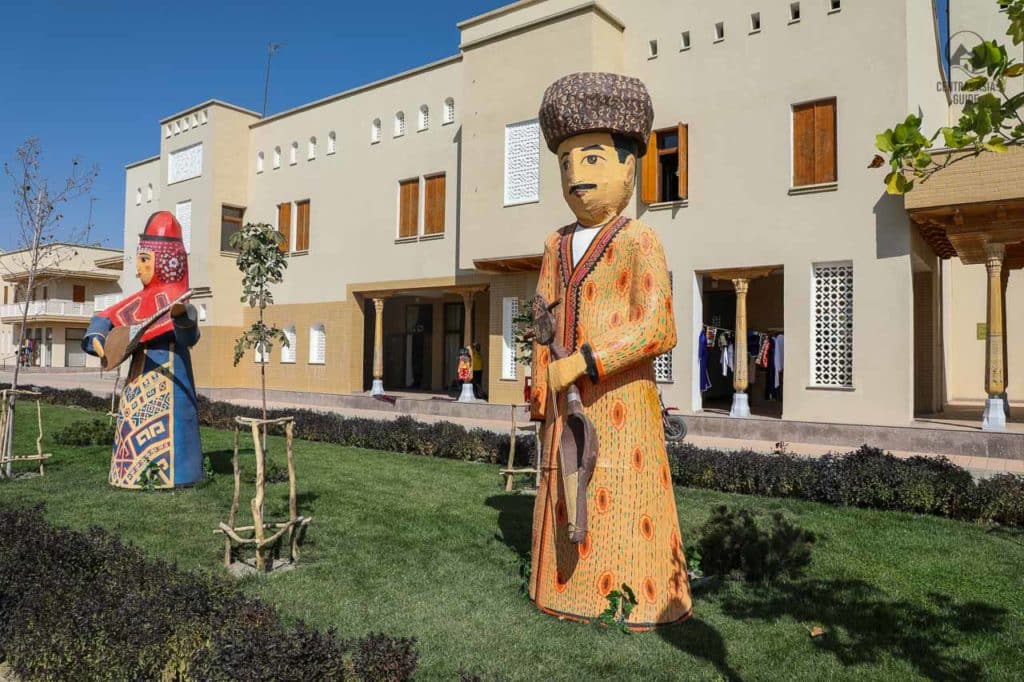

The vast expanses of the Karakalpakstan are rather poorly populated as the inhabited central area is surrounded by the Karakum and Kyzylkum deserts. The deserts actually dominate more than 80% of Karakalpakstan land area and as a result of ill-conceived Soviet-era projects, Karakalpakstan has become the epicenter of the well known global environmental disaster of the Aral Sea.
The Karakalpak economy was earlier driven by the fisheries of the Aral Sea but now only by farming of cotton, rice, melons and hydroelectric power. Fishing has disappeared almost completely due to the large scale disappearance of the Aral sea and the increased salinity of the water. Tourism is slowly developing in Karakalpakstan but it is not yet enough to cover for the business lost and therefore unemployment is an issue in the region.
Culture of Karakalpakstan
Despite the extremely low standard of living, the Karakalpak people have preserved their rich customs and traditions. The achievements of local craftsmen in wood carving, leather embossing, weaving and embroidery are widely known. In addition, Karakalpakstan is considered an open-air archaeological reserve due to the more than 300 archaeological sites such as Kalas (fortresses) preserved from the Khorezm civilization.
One of the primary roles of the Karakalpakstan culture formation belongs to the Turkic tribes. They were wandering through the territories of Central Asia for a long time and have had their ties to the Pechenegs, Oghuz, Kipchaks, the Golden Horde, Kazakh, Turkmen and Uzbek tribal alliances in the Karakalpak tribal division. Despite the centuries-old ties with the nomadic associations, the Karakalpaks maintained a peculiar type of farming, combining farming based on irrigation with sheep-herding and fishing. The Karakalpaks grew wheat, rice, millet, sorghum, sesame, cotton and sowed alfalfa but today it is hard to continue farming due to the increased salinity of the soil from the Aral sea.
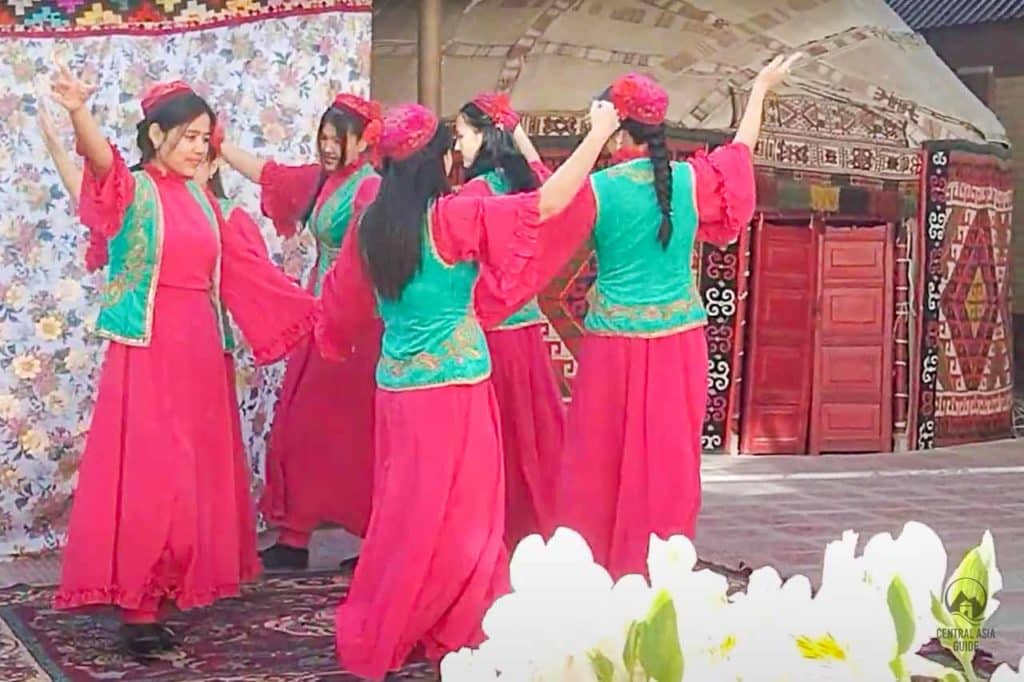
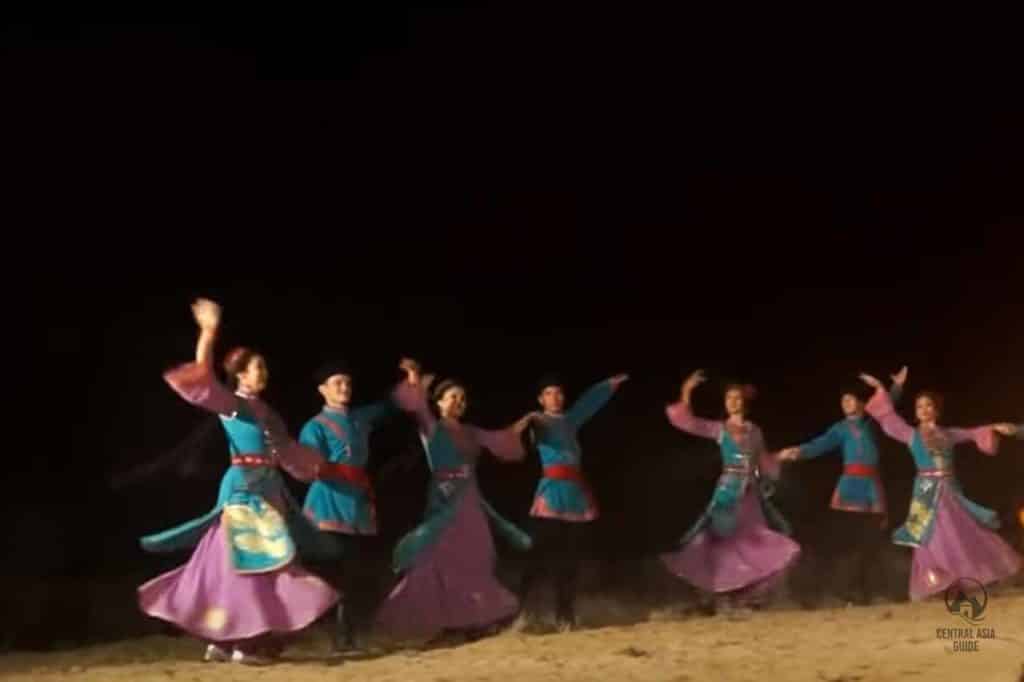
The national identity of Karakalpaks is well defined in their rich folklore, gorgeous dances, original music and ceremonies that still play an important role in people’s lives and especially in the traditional handicrafts. The handicrafts often have simple ornaments and forms of old workpieces which demonstrate their connection to the arts of ancient and medieval nomads in Central Asia.
Traditional Karakalpak handicrafts were developed mainly as essential household items for the yurt dwellings. Hence, they were made from functional materials: wool, skin, bones, wood and cotton. At the beginning of the 20th century, women still made ornamental floor mats, multicolored feltings for yurt decoration, woven rugs, patterned carpets, as well as patchwork and most adult women maintained the art of embroidery. Men plied more complex trades, making yurts and musical instruments but engaging also in wood carving, jewelry making, leather processing and other trades.
Traditional Karakalpak clothing
Traditional Karakalpak clothing for men is formed by a long-sleeved shirt, a waistcoat, and baggy trousers. Women usually wear long dresses with headscarves. Karakalpak clothes are usually made of natural materials such as wool or cotton, and are often decorated with intricate embroidery. The traditional clothes are mostly worn only during celebrations or performances. One can still sometimes see a Karakalpak man wearing a large black & very hairy looking hat made from sheep wool that protects both from heat and cold.
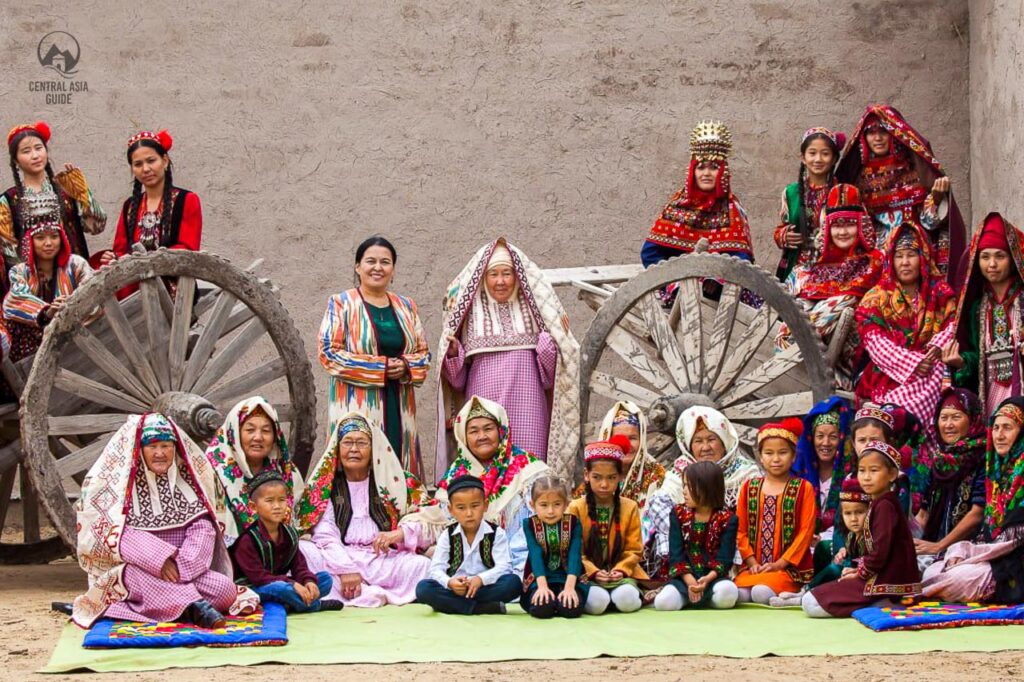
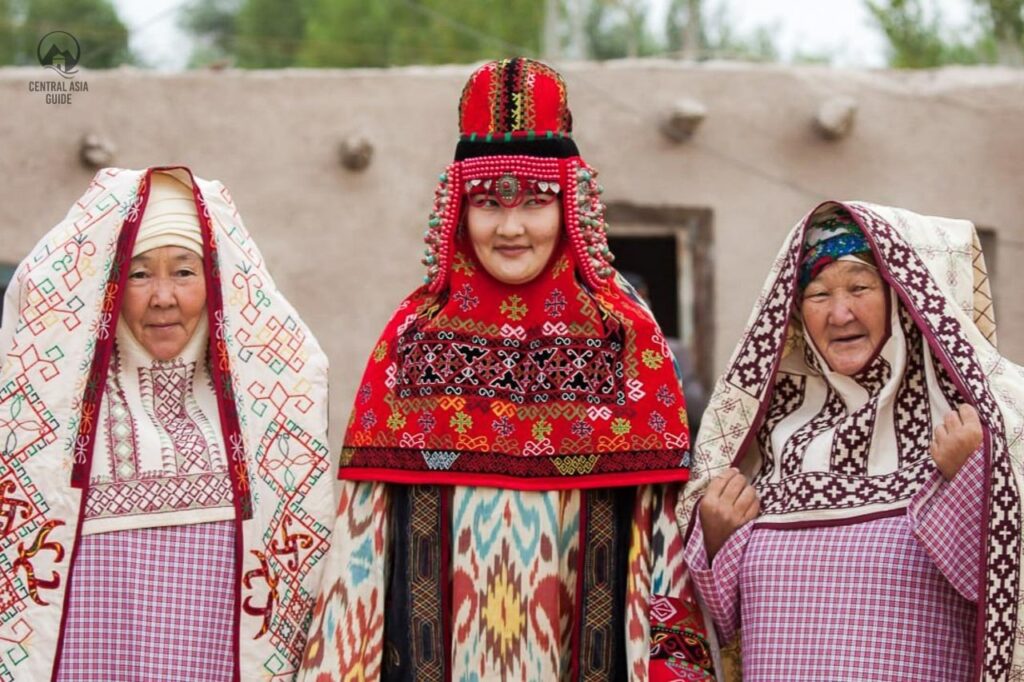
Tours to Karakalpakstan
What to see in Karakalpakstan
The most famous cultural sight of Karakalpakstan is the Savitsky Museum in Nukus, which is sometimes referred as the “Louvre in the desert”. One can also enjoy the unique nature and fauna of the Amu Darya delta and the Ustyurt plateau and see how the local nomads live in Karakalpak yurts on the shore of the Aral sea. The many salty lakes of the area also offer interesting sights for bird watchers and other nature lovers. For archaeology and history enthusiasts there are the many different sights from the Khorezm hay day period or even from earlier times.
Mizdakhan Complex and Gyaur Qala
Chilpic Dakhma "Tower of Silence"
The Fortresses (qalas) of Karakalpakstan
There are about 20 fortresses that you can explore in Karakalpakstan, in the area of old Khorezm and nobody knows how many more are not yet discovered (We guess hundreds). Eight major forts remain sufficiently intact to be of interest to a casual visitor and they are the main sight of the area. In the ancient times the fortresses were signaling each others of danger with signal fires through a network of “lighthouses”.
Other Sights & Destinations near Karakalpakstan
Page updated 28.10.2024